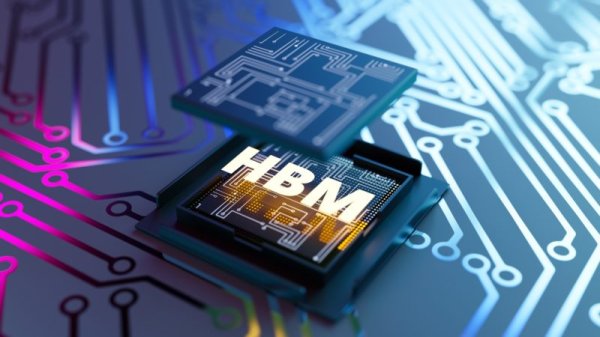Huirong Gou Jiazhang: Memory shortages have doubled, and supply will be difficult to fill and will continue in 2026

Gou Jiazhang, general manager of memory control IC manufacturer Huirong, said that the fundamental reason is the explosive growth in demand for artificial intelligence (AI) inference (AI Inference), which has further caused the recent large memory shortage. Different from past shortages, this round of shortage is not caused by a single factor or production reduction, but involves the simultaneous shortage of the three core storage and memory components of high-bandwidth memory (HBM), NAND Flash and hard disk drive (HDD), creating a strong "pull" demand. The situation is expected to continue in 2026, and it is currently difficult to predict in 2027. The key point of its turning point is when the repeated orders will begin to ferment.
When Gou Jiazhang met with the media at Huirong Family Day, he pointed out that capital expenditure (CAPEX) in the AI field is undergoing a key change. Although AI training is still growing, it is expected that by 2026, capital expenditures for AI inference will significantly exceed training. AI inference has extremely large storage requirements, including strong requirements for HDDs, high-capacity SSDs, and HBMs. The inference process requires accurate and sufficient "affected data", which extends the data demand from cloud hyperscale operators to enterprise premises, prompting enterprises to increase local storage capacity to protect confidential data. At present, the market gap is no longer 70% to 80% of the original expectation, but the gap between demand and output has doubled.
Gou Jiazhang said that the demand for HBM has reached an extremely high level. In addition to NVIDIA, the demand for their own GPUs and accelerators from major manufacturers including AMD, Broadcom, Microsoft, Google, Meta, Amazon, etc. has also increased simultaneously. Even the demand for HBM in the Chinese market is also increasing. Under this situation, major DRAM manufacturers are shifting capital expenditures to DDR5 and HBM production, causing overall production capacity to be tight. There are severe structural limitations to HBM production, among which to achieve the same density as DDR5 requires three times the wafer throughput. At the same time, DDR5 itself is also facing price increases and shortages.
In addition, adding production capacity for advanced DDR technologies such as DDR5 is expensive and time-consuming. For example, to increase DDR capacity by ten thousand wafers per month using 1b or 1c technology, the required advanced technology capital expenditures would be approximately $10 billion. Due to the long delivery time of advanced equipment and complex manufacturing processes, production capacity cannot be increased rapidly.
As for the demand for high-capacity solid-state drives (SSDs), it mainly comes from the demand for writing data (W-data) driven by the development of AI, and it has begun to shift towards SSDs. In the future, the SSDs needed by the market must rely on QLC technology. However, despite strong SSD demand, the current global NAND Flash annual production capacity is still not enough to replace existing W-data's HDD capacity. Therefore, SSDs will not be able to completely replace HDDs within the next decade.
In addition, consumer NAND demand has also increased significantly due to upgrades in mobile phone specifications. Forecasts indicate that with the removal of the 128GB capacity option from Apple’s iPhone 17 Pro Max, it is estimated that the bit growth rate on mobile phones may increase by approximately 35% in 2026. Faced with this strong demand, major NAND manufacturers (such as Micron) have adopted a weekly or biweekly quotation strategy, and prices have continued to rise. However, due to market concerns that too fast demand intensity may lead to "duplicate orders", NAND factories are still extremely cautious in expanding production capacity.
Gou Jiazhang emphasized that 95% of the world's data storage still relies on HDD. After the HDD industry experienced inventory damage after the epidemic two years ago, the business model has shifted to "production to order" and requires customers to sign multi-year contracts and committed purchase orders (PO). Current lead times for high-capacity HDDs are a year or more. HDD makers are restrained on capacity expansion, planning to increase capital spending by only about 5% annually, relying more on technology improvements to increase disk density rather than increasing unit output.
Another factor leading to shortage panic is the Chinese market. China's demand for high-capacity enterprise-level HDDs has not been high in the past, but recently there has been a sudden demand for 64TB or even 128TB. The reason may be that it failed to obtain enough HDD allocations. This creates a vicious cycle. Overall, the HDD supply chain is highly concentrated, with only two or three key component suppliers. They have not expanded production due to past lessons, resulting in structural constraints on the supply of Nearline HDD. The current revenue growth of HDD manufacturers is mainly due to price increases, rather than a significant increase in unit sales.
Gou Jiazhang further pointed out that under the current "panic shortage", the focus of bargaining has shifted from "price" to "supply capacity." Major DRAM and NAND manufacturers face daunting challenges and must balance resource allocation between the lucrative demand for data centers and other industrial chains such as mobile phones and automobiles. Otherwise, the entire industry chain may collapse. Therefore, this shortage is the result of the overlap between structural and basic constraints and unprecedented strong demand. It tests the wisdom and corporate responsibility of major manufacturers to cope with this rapid and strong market change.




